Greece › Santorini › Museums › Ancient Akrotiri
By Santorini Dave
See Also
- Best Hotels in Santorini
- Where to Stay in Santorini
- Best Restaurants in Santorini
- Best Things to Do in Santorini

Over 3,700 years ago, the ancient city of Akrotiri was covered in ash when a massive earthquake set off a volcano. Today, the indoor archaeological site is a popular cultural attraction for visitors to Santorini.
Archaeological Site of Akrotiri
The well-preserved ruins of Akrotiri are the most popular cultural attraction for visitors to Santorini. The ancient city was a colony of the Minoan civilization on the Greek island of Thera, modern day Santorini. Often referred to as the Pompeii of the Aegean, the settlement was buried in ash during a volcano triggered by an earthquake in the 17th century BC, which also set off a tsunami that eventually destroyed the Minoan civilization of neighboring Crete. Many historians believe Akrotiri to be the inspiration behind Plato’s Atlantis legend.
For over 3,700 years, the ancient city of Akrotiri lay buried under volcanic ash and layers of pumice, preserving parts of the city’s infrastructure, homes and their furnishings, and the remains of many objects, art pieces, and frescos. It wasn’t until 1967 that the ancient city was discovered in an archaeological excavation just south of the modern day village with the same name, on the southwest side of the island.
Currently, the ruins are housed in a building covered by a bioclimatic roof that opens and closes to allow air flow. This makes it a cool and dry place ideal for escaping the heat of summer days. A raised boardwalk winds through the large area, with staircases down into sections of the dig. The exhibits have informative and easy to read signs, as well as video monitors with visual displays. Several objects and frescoes from Akrotiri are on display at the National Archaeological Museum in Athens, and some in the Prehistoric Museum in Fira.
We highly recommend booking an Akrotiri tour (meet guide at entrance) to show you around the site and discuss the history of the island, the eruption, and the ensuing destruction. Many tours include hotel pick up and drop off. One excellent option is the private tour of Akrotiri and 3 Santorini wineries.
Archaeological Site of Akrotiri Hours and Information
- Season: April 1 to October 31, open daily. November 6 to March 31, closed on Mondays.
- Hours: April 1 to October 31 – 8am to 8pm. November 6 to March 31 – 8am to 3pm.
- Website: odysseus.culture.gr
- Location: Akrotiri, Santorini 847 00
- Telephone: +30 228 608 1939
- Admission Fee: €12 per person. €6 for EU senior citizens (65+) and those under 25 from non-EU countries. Combined ticket at €15 per person includes single admission to the archaeological site of Akrotiri, archaeological site of Ancient Thera in Kamari, and the Prehistoric Museum of Thera in Fira. Valid for 3 days.
- Free Entry: 6 March (in memory of Melina Mercouri) • 18 April (International Monuments Day) • 18 May (International Museums Day) • The last weekend of September (European Heritage Days) • National Holidays • 28 October • Every first Sunday from November 1 to March 31
- Parking: Paid parking (€5) across the street. Limited free parking down the street.
- Bus: The bus stop is right across the entrance, in front of the parking lot. Another stop is in Akrotiri village with a well signposted 1km-path to the site.
- Guided Tours: Cost depends on number of people. Maximum 20 people per group.
- Dining: There’s a small snack shop at the ruins, a couple of great restaurants, Melina’s Tavern and The Cave of Nikolas, down on the adjacent beach, and a handful of cafes 10-15 minutes’ walk away.
Archaeological Site of Akrotiri
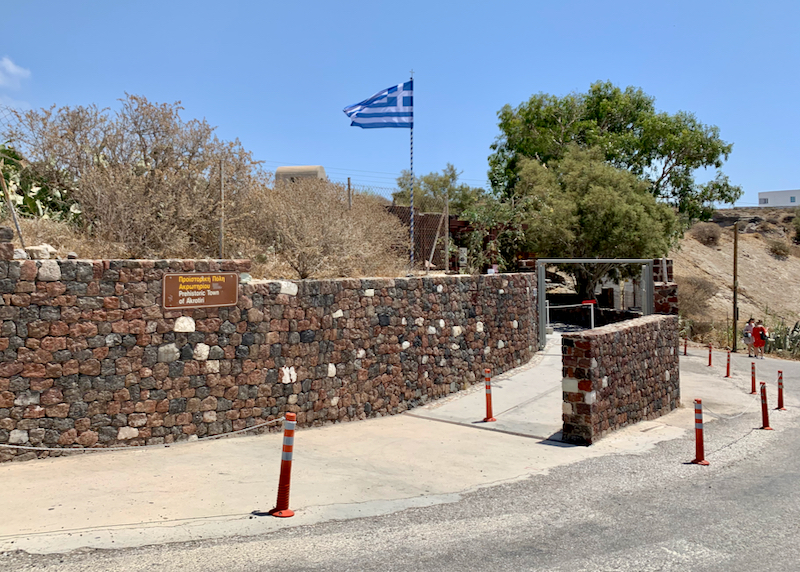
The entrance into the archaeological site.
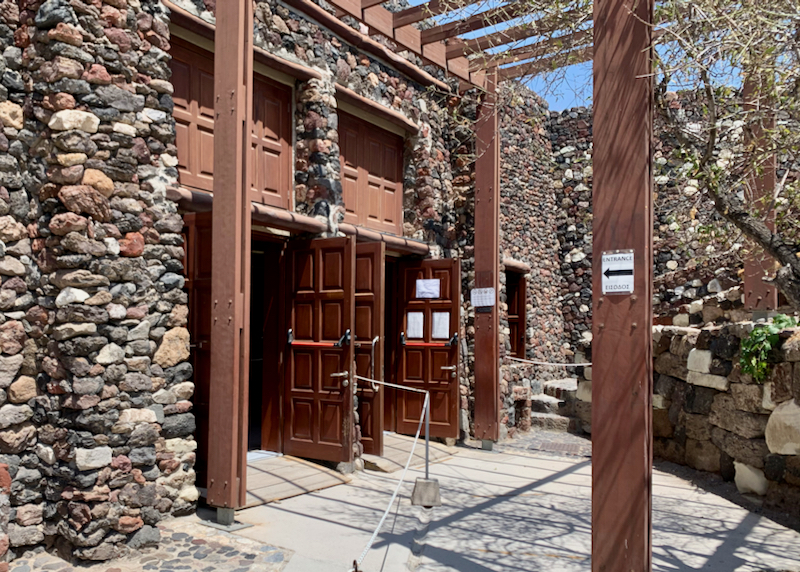
Entrance to the building the excavation is housed inside of.
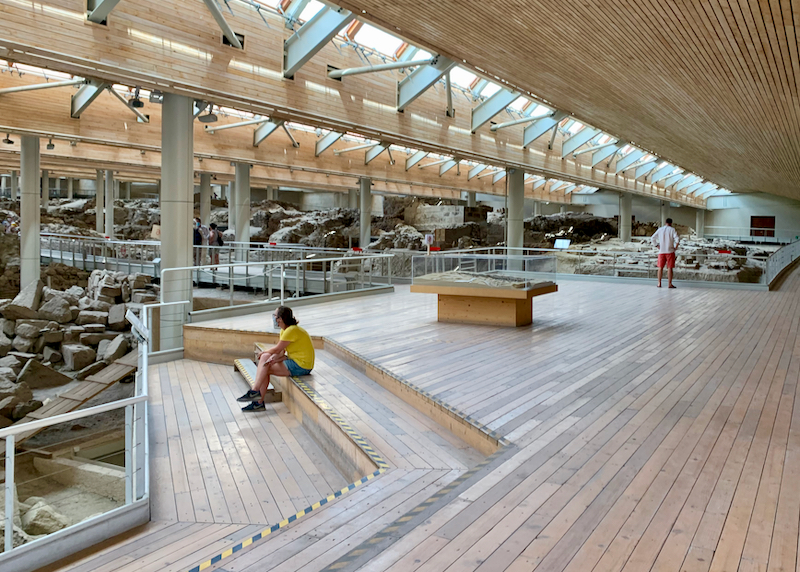
Large viewing area for groups and individuals.

Raised boardwalk winds above and through the site.
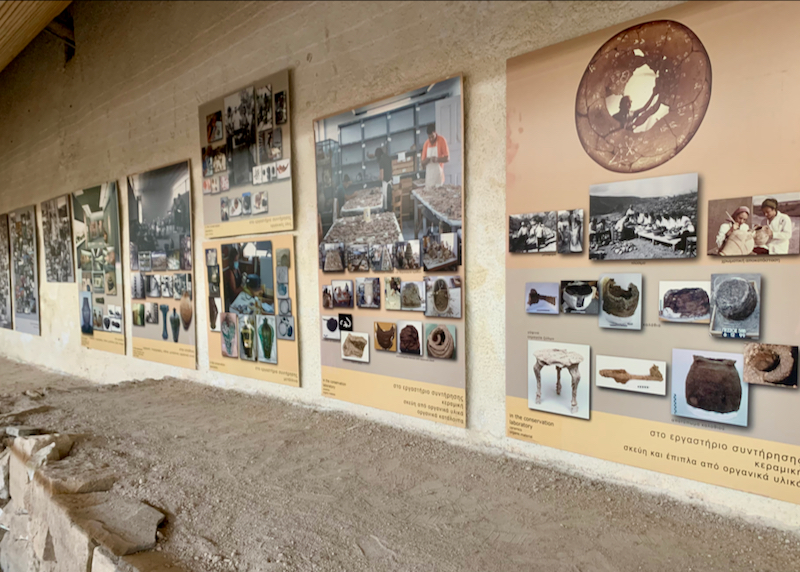
Well presented historical information.
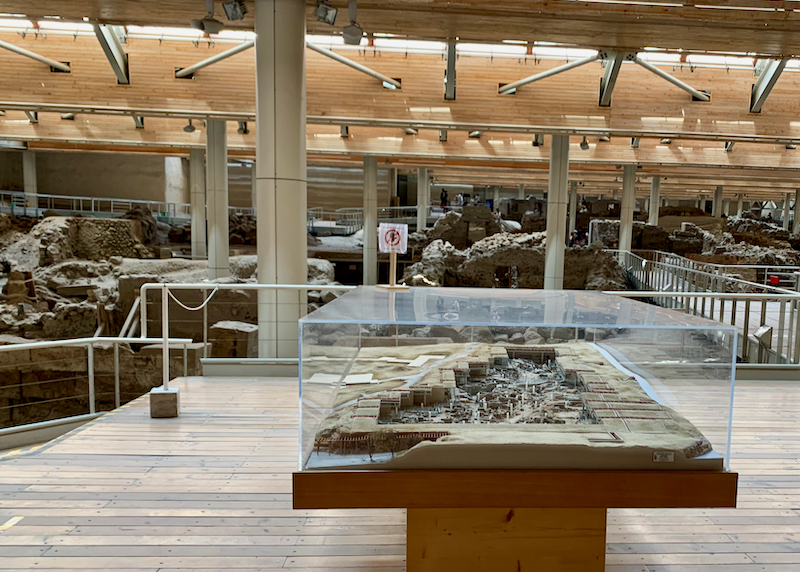
Scale model of the excavation.
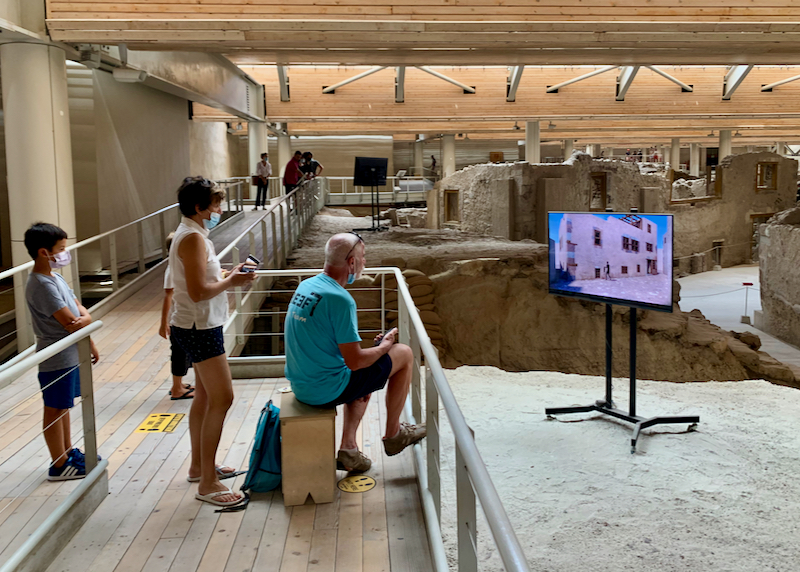
Video monitors throughout show short videos that highlight elements of the site.
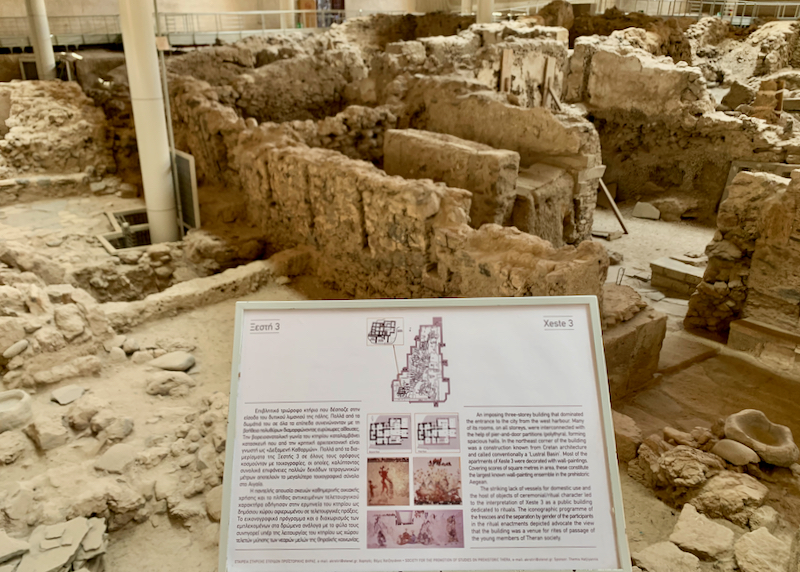
Excellent information and signage throughout the site.

There’s a large paid parking lot directly across the street from the entrance.

The public bus stops directly across the street from the entrance.




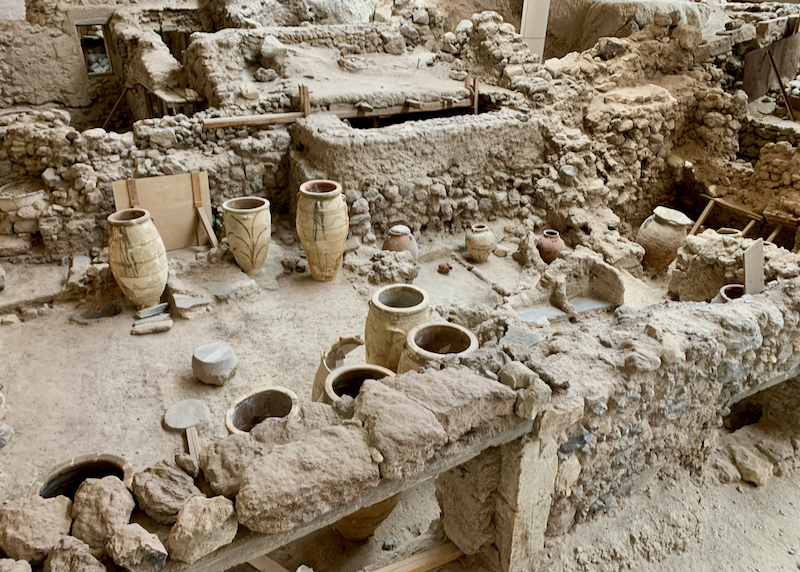

After you purchase your ticket, there’s a short walk from the entrance down to the ruins.
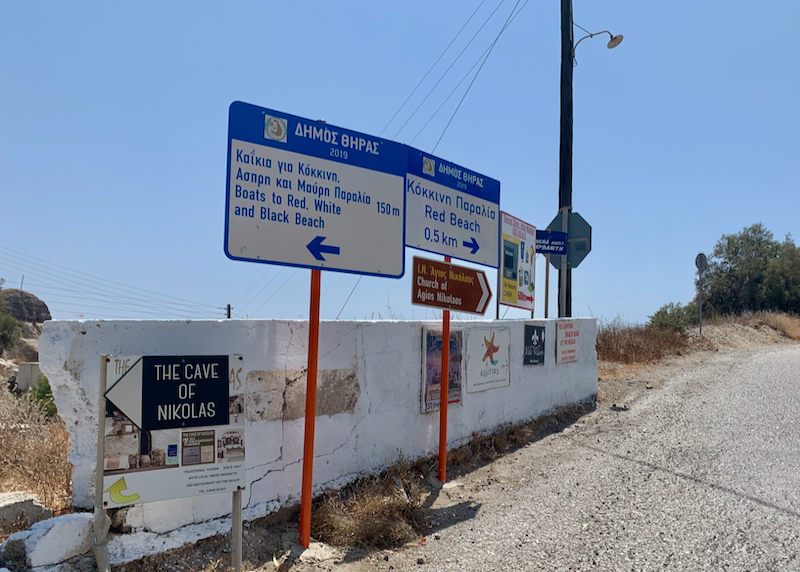
There are a few excellent beaches not far away.
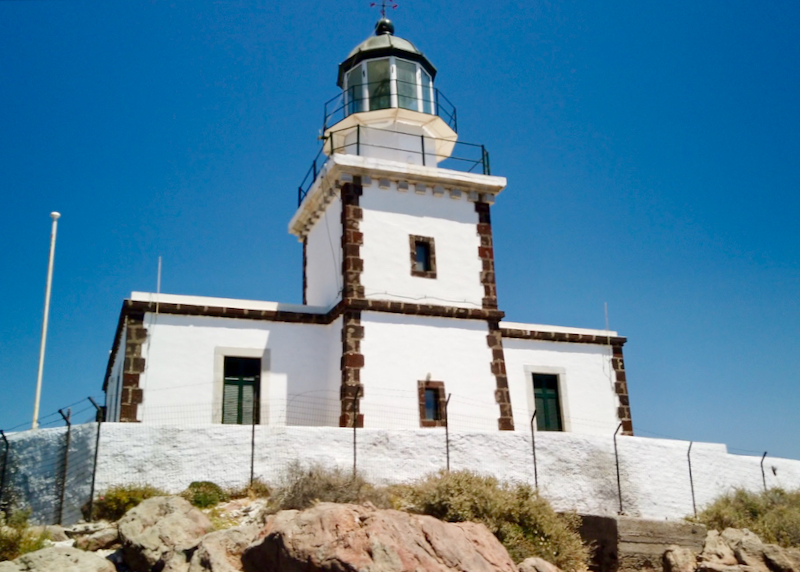
The lighthouse is another popular site to visit in Akrotiri.
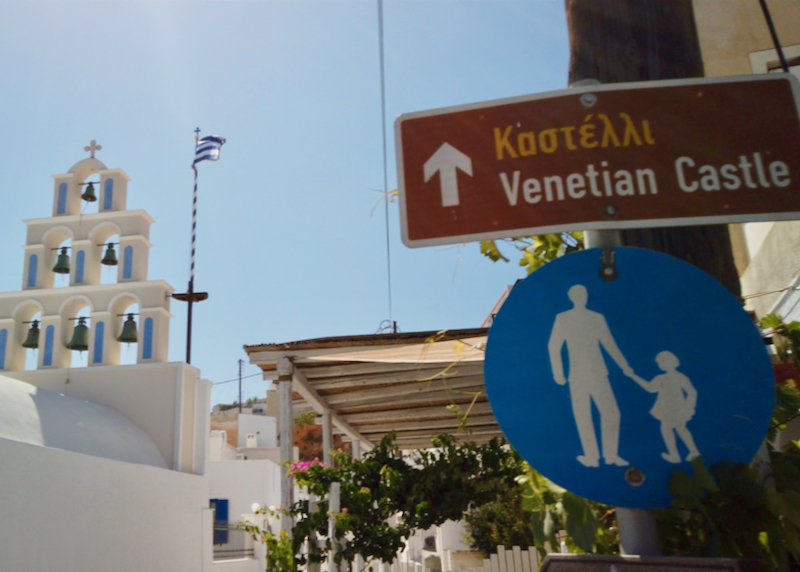
A short walk above the village of Akrotiri is a Venetial Castle.
About Santorini Dave